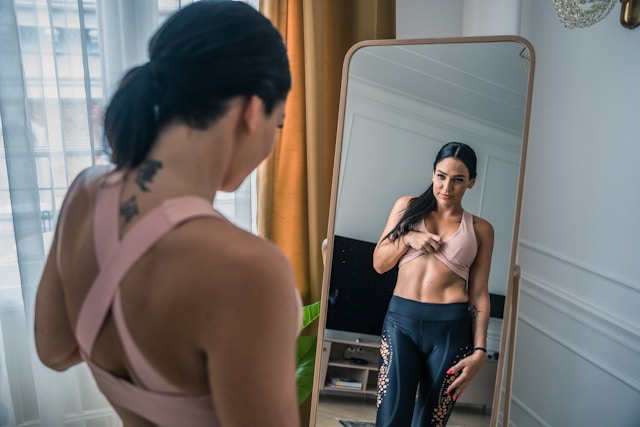This post was developed through a partnership with BetterHelp.
In a world inundated with messages about what bodies should look like, it’s not uncommon for people to get stuck in a cycle of negative self-talk or dissatisfaction with their physical appearance.
If you are one of those people, know that you are not alone. From Hollywood beauty standards to social media trends, it’s hard to be a powerful and confident woman in today’s world. It can be easy to feel like you’re not good enough, and these thoughts can develop into deep, permanent self-loathing.
However, having a negative self-image can impact your mental health and overall well-being. It can suck the joy out of life and make it difficult to enjoy the good things. Learning to be kinder to yourself is an important step toward healing and self-acceptance.
In this blog, we share six common strategies to tackle negative body image and live a happier, more fulfilling life.
What Causes Body Image Problems?
Body image problems can be caused by a complex mix of factors, including societal and media pressures, personal experiences and psychological predispositions. Constant exposure to idealized body types in the media can set unrealistic standards, while personal experiences such as bullying or critical comments about your appearance can have a major impact on your self-esteem.
Additionally, mental health issues such as OCD, anxiety, and depression can worsen negative feelings about your body. If you are unsure whether you have an underlying mental health problem, you may need a mental health test. If you want to know more about what that means, take a look here source from BetterHelp.
6 strategies for dealing with negative body image
Here are some ways to battle that inner critic and make peace with your body.
- Challenge negative thoughts – Start identifying and challenging your critical inner voice. Whenever you find yourself thinking negatively about your body, pause for a moment and ask if you would talk to someone you love in the same way. Challenging these thoughts and replacing them with neutral or positive affirmations can gradually change your way of thinking.
- Limit your exposure to toxic media – Be aware of the media you consume. If certain social media accounts or magazines make you feel bad about your body, it’s time to unfollow or set them aside. Look for content that celebrates body diversity and promotes positive body image.
- Practice self-care – Self-care is about more than bubble baths and face masks; it’s about taking care of your body’s needs. This may include feeding him healthy foods, participating in physical activities you enjoy, and getting plenty of rest. Listen to your body and respond to its needs with kindness.
- Focus on non-appearance-related goals – Change your focus from what your body looks like to what it can do. Set goals that aren’t related to your appearance, such as running a certain distance, learning a new skill, or practicing meditation. Celebrating these achievements can boost self-esteem and reduce the focus on your physical appearance.
- Seek support – Remember that you are not the only one who feels this way. Talking to friends, family, or a therapist about your feelings can provide support and perspective. Sometimes it can be comforting to know that others share your experience.
- Mindfulness and gratitude – Practicing mindfulness can help you live in the present and reduce negative thoughts about your body. Additionally, keeping a gratitude journal, focusing on what you appreciate about your body’s functionality, can promote a sense of gratitude and acceptance.
Takeaway
Changing the way you see and treat your body takes time and patience. It is a journey of small steps towards self-love and acceptance. Implementing strategies to combat negative body image can help you become kinder to yourself. Remember that your worth is not determined by what you look like. Learning to embrace this can open the door to a healthier relationship with your body and yourself.





